The world is leaning towards online and the commercial sector is no exception. In 2024, there’s no need to explain what e-commerce is. May it be a business giant or a small firm, everyone sells online to serve a bigger market. Statista predicts the global e-commerce market size will go beyond $8 trillion by 2027, just 3 years from now. In the past 10 years, the number of digital buyers has also increased by more than 1 billion. So there’s absolutely no doubt that e-commerce holds the key to the future. The only thing that remains is to learn the ways to survive in it.
In this article, we have developed 11 steps to follow to improve the user experience of your e-commerce website, highlighting the key features and real-world examples through some of our own projects, to help you find both inspiration and success in the world of e-commerce.
Why Do You Need to Ensure a Good UX for Both Mobile & Computer?
When selling something to a consumer, the first thing you need to do is make sure that the customer is satisfied with the entire purchase process. UX is important in e-commerce since it affects both websites and mobile apps. You cannot simply disregard one of them and expect your sales to increase.
Nowadays, people are always on the go. In 2022, 41.8% of retail e-commerce buyers used mobile to purchase a product. Almost 79% of mobile users buy something online every six months. Here, mobile apps play a significant role as e-commerce app sessions have increased by 127% between 2017 and 2022. Apps can drive your conversion rates as users are more likely to follow the purchase journey. It also boosts customer loyalty and lets retailers better track customers’ behaviour. Despite this, 80.79% of the mobile e-commerce carts are abandoned, indicating significant scope for UX improvement.
On the other hand, desktop websites have a higher conversion rate than mobile, 4.79% compared to 3.32% from mobile. While m-commerce increases, websites are still as important as ever. Higher comfort and more research scope draw the most serious customers to visit the website before purchasing a product. That’s why you need to improve the UX of your e-commerce on both platforms to retain the maximum number of customers.
10 Steps You Need to Follow
Checklist
1. Understand Your User’s Purchase Journey Clearly
User journey is the series of steps that represent how you want users to interact with your app. For developing the e-commerce mobile app “Lube Solution” for our client Mobil Bangladesh, we first generated a clear idea about how we want our users to interact with our app, even before we started to develop the app! This is particularly important for e-commerce applications as their primary purpose is to sell.
The purchase journey starts with the sign-up/sign-in page. The sign-up or registration process should be fairly easy. A lengthy sign-up process may lead to an increased abandonment rate. Enabling signing up with social media or a Google account can come in handy here as it’s just one click away. Only minimal information should be required.

After signing up, the first thing a customer sees is the home page. It should be simplified to avoid confusion & products should be categorised. Whereas, the product page should highlight the key information such as the name, type, volume, and price of a product. The product details page/section needs to have accurate and enough information to fulfil customer needs.
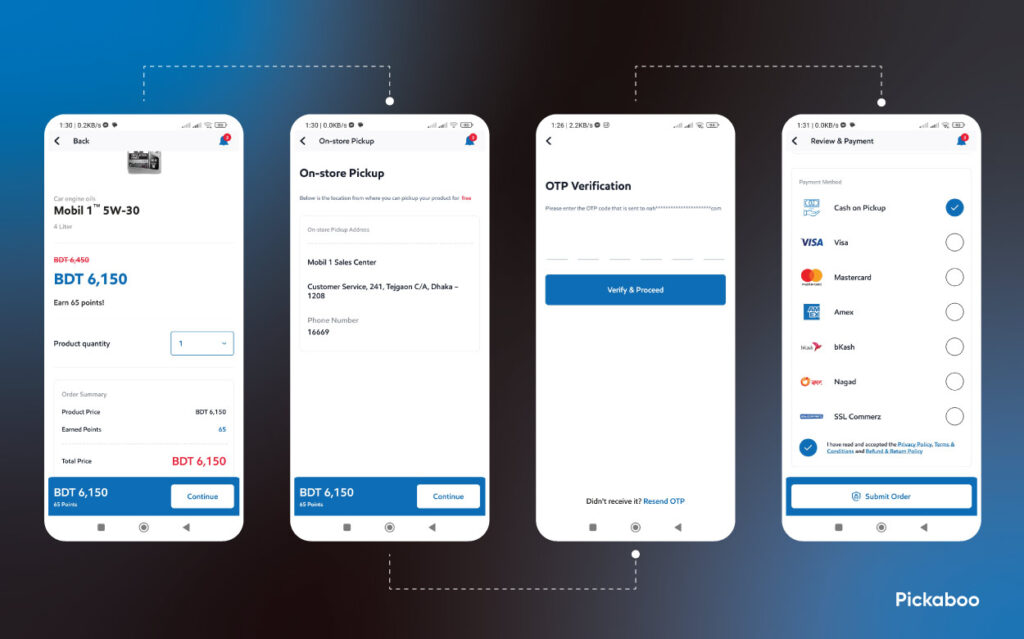
Customers should be able to go through the cart to the checkout page with just two taps. It reduces the abandonment rate from the cart. Another good practice is to integrate points & coupon options on the checkout page. The last two crucial points are the delivery address & payment method. Availing multiple options in these regards can enhance the overall purchase journey.
2. Optimise Product Details Pages with Correct & Pictorial Description
Product details pages are one of the most important elements of e-commerce websites. The primary function of these pages should be to let your customers understand or feel the products they are buying. When a customer goes to a brick & mortar store, he can just grab the product, examine it and then make the purchasing decision. But in e-commerce, the customer entirely depends on the product details page.
Provide Details with Pinpoint Accuracy
Trust is one of the biggest factors that can either benefit or haunt your e-commerce platform in the long run. That’s why you should not compromise when it comes to ensuring the accuracy of information. Provide all the details relevant to the product. If necessary, add tables with technical specifications, charts or metrics. Build trust by ensuring that the real specifications conform to the specifications mentioned on the site.
One Image Tells a Thousand Words
Image is the most vital part of product details. It’s as important as text-based information, if not more. Without an image, the chance of making an online sale is almost non-existent. It helps the customer visualise the product and boosts the conversion rate.

Here are a few tips on how to boost your sales with images.
- Consider investing in product photography. A high-quality image may induce a sense of quality.
- Create background or reference objects to compare the size of the products.
- Avail image-zoom option to give a closer look at the product
- Add short videos of the product in addition to still images.
- Consider implementing Augmented Reality to let the customers see how the products would look in real life.
3. Use Scaleable Frameworks During the Development Phase
For e-commerce businesses, employing scalable frameworks in app development is a smart move. Take the example of Pickaboo’s (an e-commerce platform) mobile e-commerce app, where we used the React Native framework. This framework ensured a consistent look and feel with Pickaboo’s website, which we developed using the Next.js framework. Thus we could maintain a similar user interface and features for Pickaboo as our users switched between the web and mobile platforms.
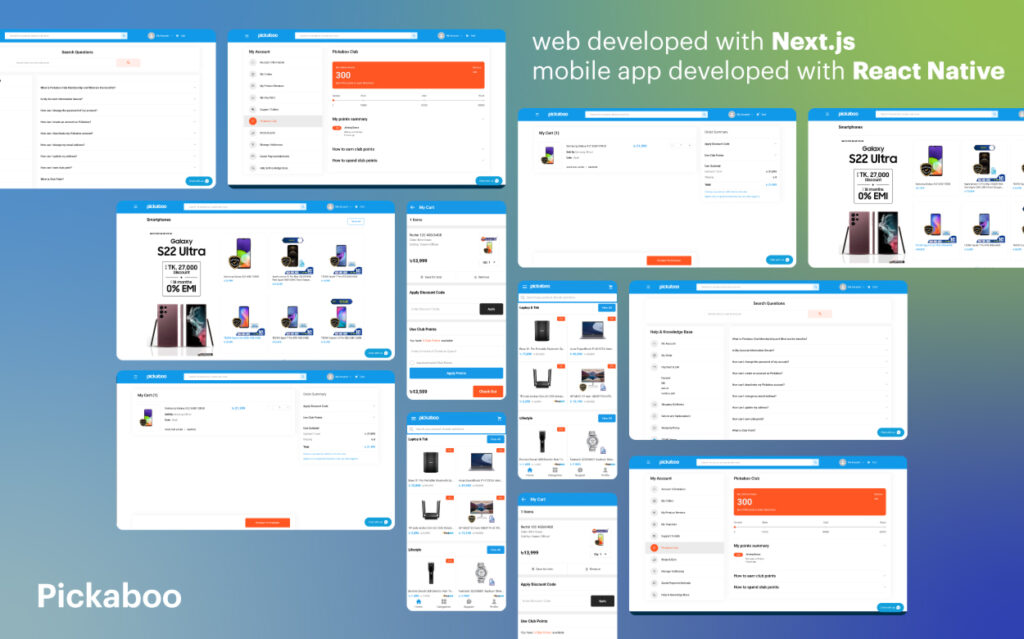
Flutter, another ace in our toolkit, lets us craft apps that run seamlessly on Android, iOS, and the web using just one codebase. This time-saving magic allows us to slash costs – while offering a consistent user experience at the same time.
4. Optimise The Journey From Add-to-Cart to Checkout
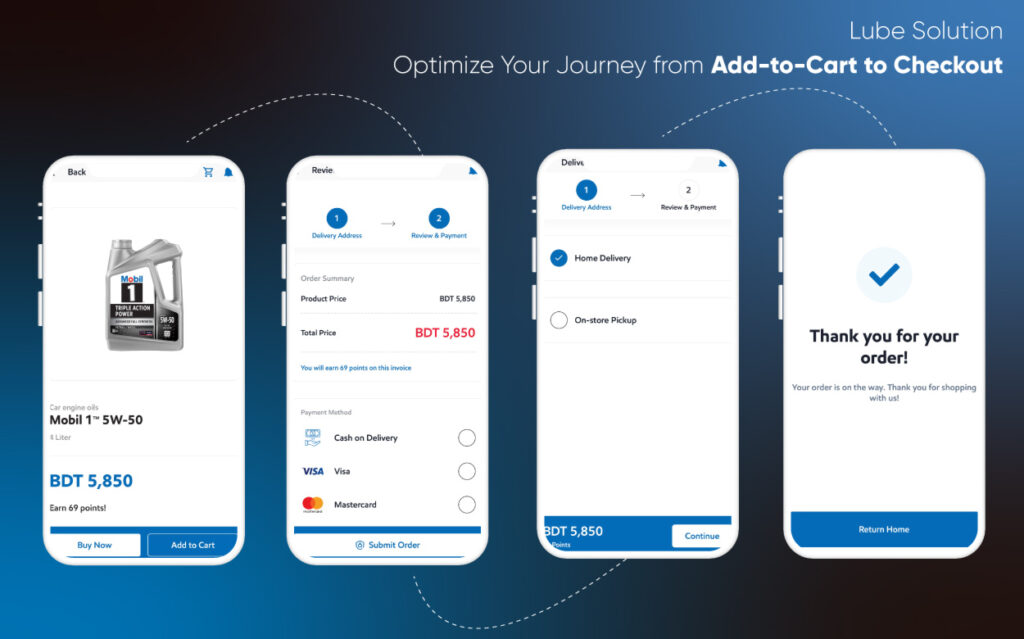
In the world of developing e-commerce mobile apps, optimising the journey from adding items to the cart to completing the checkout process is the most crucial part. This is where you have the highest chance of losing your customers!
However, by ensuring a smooth transition between the cart and checkout pages, you can do quite the opposite and turn more of your visitors into customers. To achieve this, the checkout page should incorporate both shipping method and address details – all on the same page! This creates a frictionless path, and thus the visitors can progress steadily toward their purchase – without the need to backtrack or navigate to different pages.
The ultimate goal is to simplify the process, allowing users to move forward, reach their desired page, and complete their purchase effortlessly.
5. Make E-commerce Navigation Intuitive
Customers hate to get confused when they look for something on an e-commerce website. That’s why the navigation process needs to be streamlined & smooth. Categorising products based on functionality & dividing those into sub-groups is a very useful strategy for simplified navigation. Grouping smartphones and sub-grouping those based on different mobile brands is a prime example of this strategy.
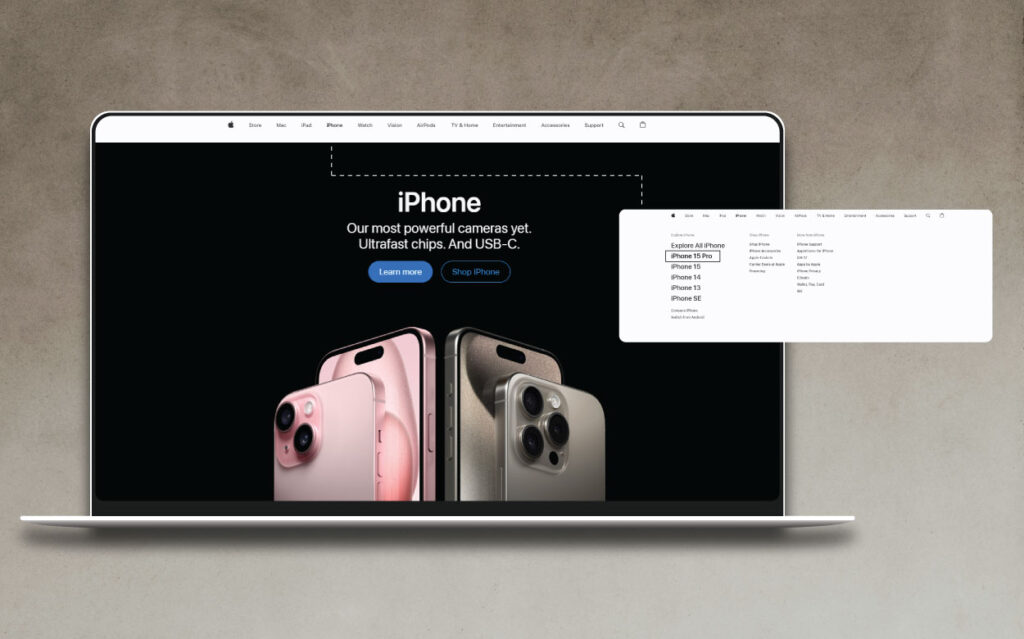
Another way to guide the customer’s intuition is to implement CTAs. Call To Action Buttons such as ‘Add to Cart can be very useful in converting potential customers to actual customers.
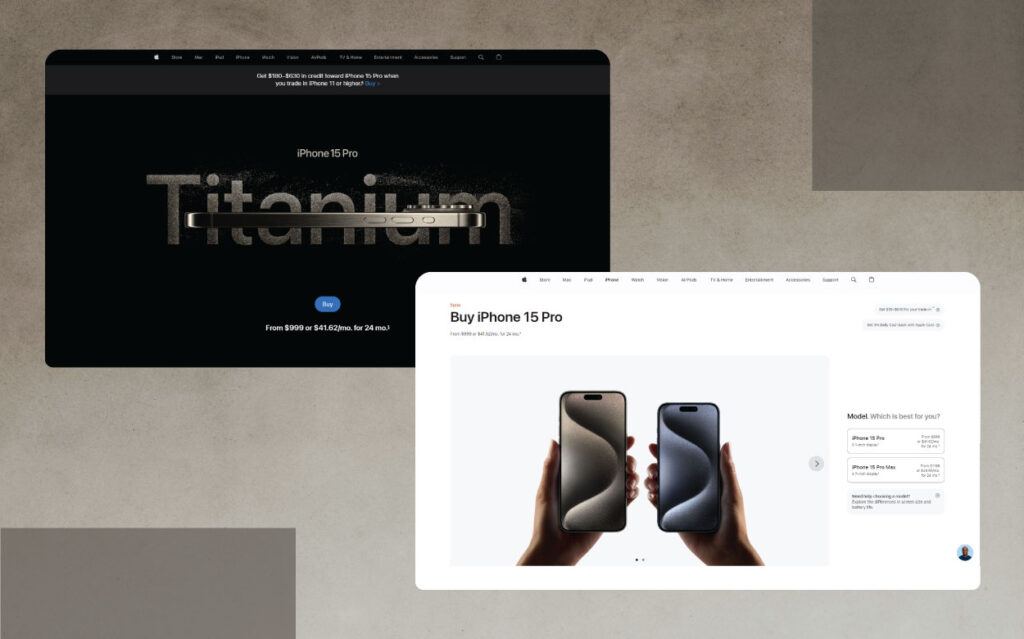
6. Wishlist Item: Convert Wishes into Purchases
40% of e-commerce customers think that retailers can enhance their buying experience by offering a wishlist option. Customers often look at different products for familiarisation to make a purchase not now but a little bit later. They also evaluate all options from the same group but want to give them a comparison in order to choose the best offer. To make their experience easier, provide them an opportunity to add the product to their favourites. Such practice has a bunch of benefits.
- Creates motivation for the customer to return to your webpage.
- The opportunity to convert more items from the wishlist to actual purchases.
- Valuable insights on customer’s preferences.
7. Reward Points: Maintain Customer Loyalty
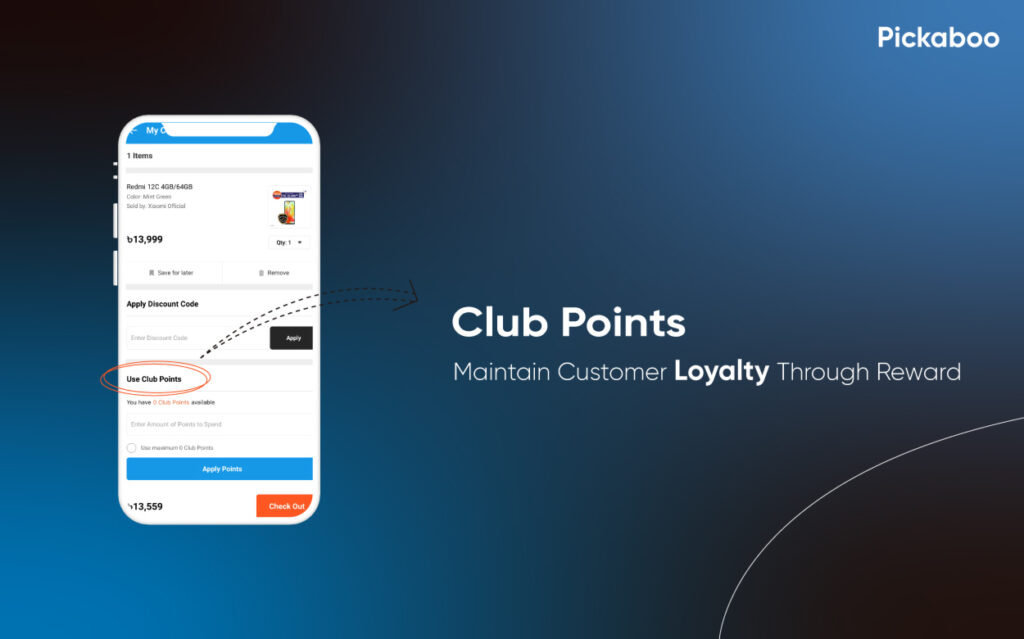
Integrating reward points in the app is like offering a treasure of incentives to visitors, keeping them engaged and loyal. Customers, when earning points for their actions, feel a sense of achievement. This encourages them to stay connected to the platform, ultimately leading to increased loyalty and repeated visits. There are several ways to increase engagement with reward points.
- Creating an account can be the first step.
- The referral function can bring new customers to the e-commerce platform.
- Motivates customers to spend a minimum amount during a certain period.
- A tiered reward system lets the customer have special discounts & enjoy the grind.
8. Push Notifications: Implement for Targeted Marketing
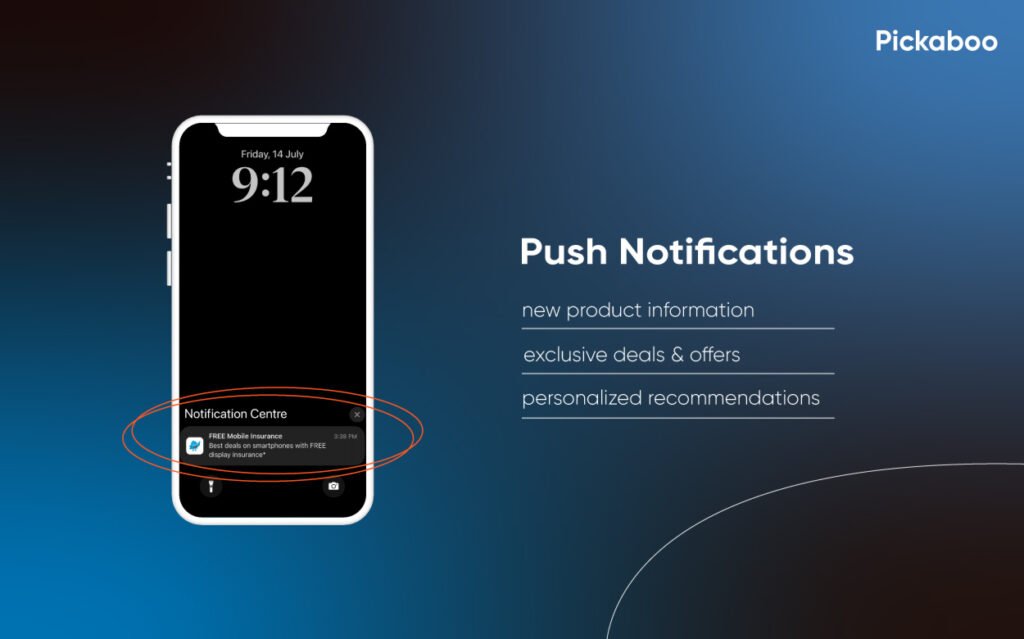
Push notifications create engagement by delivering timely notifications about exclusive deals, new arrivals, and recommendations directly to your user’s mobile devices, just like a friendly tap on the shoulder. It is possible to personalise these notifications from user to user as well.
Personalising these notifications can lead to significantly higher revenue. According to Invesp, 49% of customers buy products they weren’t planning to buy just because they got a personalised recommendation. Even 54% of the sellers report that personalising recommendations for a targeted market is one of the key drivers behind average product sale
9. Product Reviews and Rating: Increase Your Product Credibility
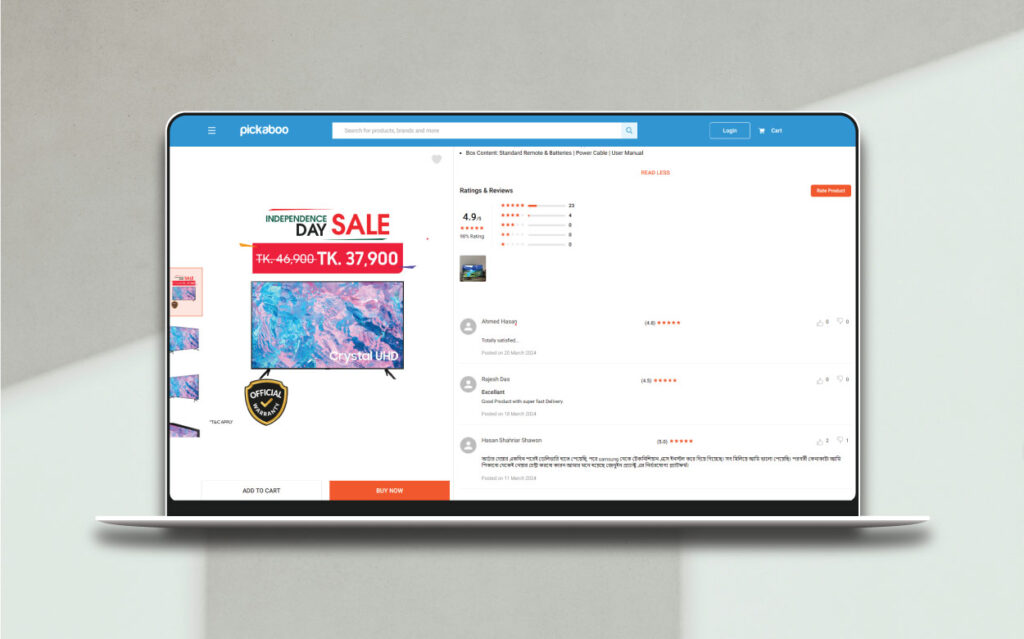
Including a review and rating system for each product enhances product credibility, just like a trustworthy friend’s recommendation when it comes to buying something! 70% of customers are most likely to check reviews before making & purchasing decision. Customers gain confidence from others’ experiences – increasing trust in the product’s quality and the brand’s image as a whole.
10. Get Accurate Insights on Your Business: Use Data-Driven Tools Like Google Analytics and Meta Pixel
By utilising data-driven tools like Google Analytics in e-commerce tracking, you can gather accurate insights about your business. It is like having a special lens that quantifies and shows you the behaviours of your website visitors. With this information, you can optimise your strategies & target specific audiences, and drive up your sales!
As for Meta Pixel, just adding a small code snippet to the backend of your mobile app unlocks a world of valuable data, enabling you to measure, optimise, and create effective ad campaigns tailored to your audience’s preferences. Whether the goal is to generate more profit or to scale up, these analytical tools undoubtedly help businesses grow faster by determining the right direction.
Summing Things Up
Investing in your e-commerce UX should lead to a good return in the form of conversion rate. It is important to measure & track your conversion rates after implementing all these steps to improve UX. However, an improved UX might also positively affect your customer’s perception of your business and benefit the company in the long run.
Frequently Asked Questions (FAQs)
How can I improve my e-commerce search?
To improve your e-commerce search, consider using autocomplete, personalising the search experience, and letting customers filter search results.
Which web analytics tool is best?
Although there are many well-performing web analytics tools, Google Analytics is still considered the best tool for your website.
What factors should you consider when choosing a development platform for e-commerce mobile apps?
Scalability, integration capabilities, development cost, and target audience’s preferred operating system – iOS, Android, or both.
Why is customer service important in e-commerce mobile apps?
Offering customer support within the app enhances the overall user experience, leading to improved customer satisfaction.


